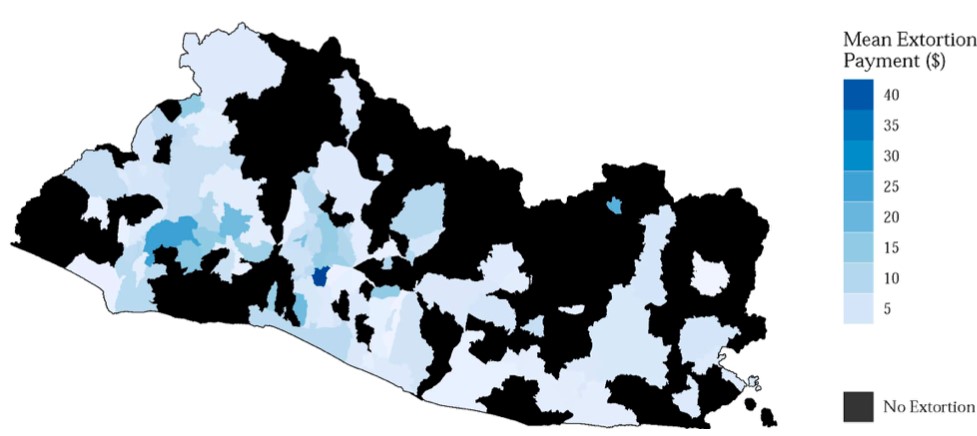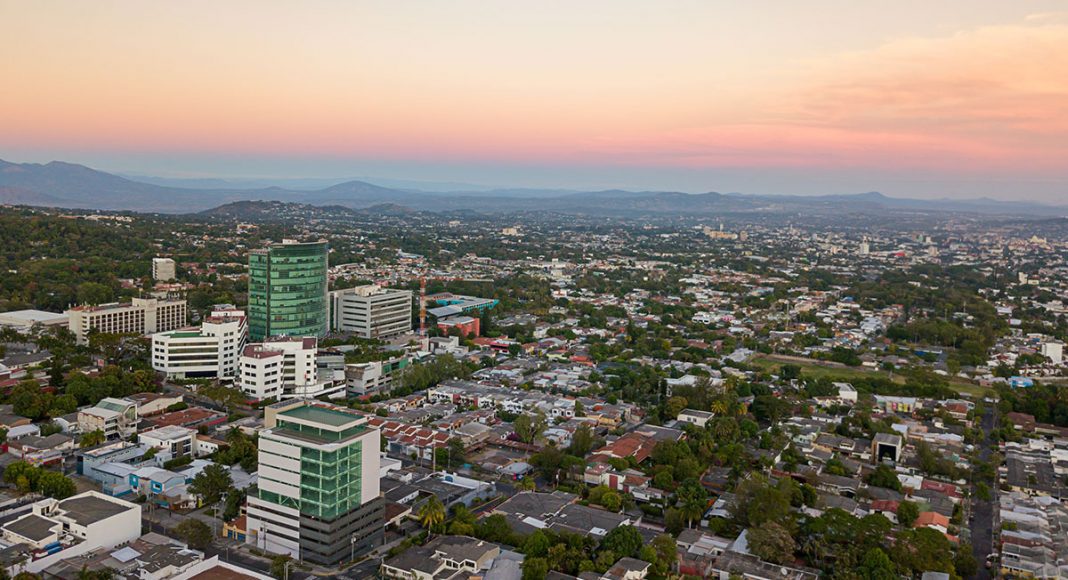A new paper explores how truce deals between gangs are equivalent to collusion, and result in higher extortion prices that have negative consequences for consumers.
Across the world, millions of individuals are affected by organized crime and associated extortion. In countries with organized crime, governments have often facilitated cooperation and negotiated truces between criminal organizations in order to reduce violence that often results from gang competition. In addition, criminal organizations sometimes collude on their own to respect each other’s exclusive extortion territories. While gang cooperation has the potential to reduce violence, little is known about the effect of cooperation on extortion, a main revenue source for criminal organizations.
Understanding how cooperation and competition between gangs affect extortion is challenging because extortion is difficult to measure systematically and is rarely reported to the police. For example, in El Salvador where extortion is prevalent enough to be a daily aspect of life for some, only a very small fraction of extortion incidents are reported to the police due to fear of retaliation from the gangs or a lack of confidence in the state’s response. Due to the difficulties of measuring extortion, we lack a complete understanding of the economics of extortion by organized gangs. In particular, there is little evidence on how gangs determine extortion rates, how extortion is affected by gang cooperation and competition, and how extortion of firms ultimately impacts consumers.
In a recent paper, we address these challenges in measuring extortion by using unique data on extortion payments by a major wholesale distributor in El Salvador. The data covers over 50,000 extortion payments made to gangs by truck drivers while making a delivery over from 2012 to 2019 (see Figure 1). We use these data to understand the economic costs of extortion, and how cooperation and competition between gangs affects extortion and consumer prices. In particular, we study a 2016 non-aggression pact between gangs in El Salvador to provide causal evidence on how cooperation and collusion between gangs affects extortion and downstream prices.

How Does Collusion Between Gangs Affect Extortion?
Prior to the 2016 gang non-aggression pact, El Salvador had one of the highest murder rates in the world. These high levels of violence were largely due to territorial gang wars in which the two major gangs, MS-13 and Barrio 18, compete for territory in which they can extort business. Extortion is the primary source of revenue for the gangs in El Salvador. Estimates suggest that 70 percent of all the businesses are extorted by gangs, with distribution and transport firms being particularly affected.
On March 26, 2016, the leaders of the main gangs in El Salvador unexpectedly announced a non-aggression pact. Gang leaders from MS-13 and Barrio 18 agreed to respect other gangs’ territories and to stop competing for extortion territory.
We hypothesize that this gang collusion led to an increase in extortion. Informed by qualitative evidence from El Salvador, we argue that the pact may have allowed gangs to divert resources from violent competition with rival gangs towards extortion of businesses in the territories they controlled.
To examine how the non-aggression pact affected extortion, we compare changes in extortion (before and after the pact) in municipalities in which gangs previously competed relative to areas in which only one gang was present and had a monopoly on the territory. To validate this difference-in-difference approach, we show that the non-aggression pact mainly reduced gang violence in areas with previous competition.
We find strong evidence that gang collusion increases extortion rates. Figure 2 shows that the non-aggression pact increased extortion by 15 to 20 percent in areas with previous gang competition relative to areas without prior gang competition. Extortion mostly remained unchanged in areas without previous gang competition but increased significantly in areas with gang competition. These results highlight that when criminal organizations are able to collude and reduce competition, they significantly increase extortion.

How Does Extortion Affect Consumer Prices and Health?
We use our data to shed light on the broader consequences of extortion for consumers. Because extortion increases the costs for firms conducting business in gang territories, gang extortion might ultimately also increase the prices faced by consumers. This means that the negative consequences of extortion might not be limited to the firms they extort; instead, extortion can have downstream negative consequences on consumers.
To provide additional insight into the effect on consumers, we focus on pharmaceutical markets, given that El Salvador has among the highest drug prices in Central America. Using detailed administrative data for pharmacies, we find that the non-aggression pact increased retail prices for drugs by 12 percent. This is especially important, as higher prices for pharmaceuticals may have negative consequences for health. In fact, we find that for chronic diagnoses potentially affected by drug adherence, hospital visits increase by 9.5 percent in municipalities where gangs were previously competing. In contrast, we find no change in hospital visits for conditions that are less affected by high drug prices such as injuries. This suggests that the increase in visits for chronic diseases is likely due to the increase in drug costs. These results show how increases in extortion rates due to gang collusion can diffuse through the economy and cause large negative welfare effects for consumers.
Policy Implications
Given the prevalence of extortion, it is important to develop policies that target the root causes. Governments have attempted many strategies to limit the negative consequences of gang violence and extortion. A controversial policy used by governments worldwide is to provide tacit support for gang truces. While some have advocated for truces because they may reduce gang violence via reduced gang competition, these truces tend to lack popular support and often face political backlash.
We provide evidence for an additional consequence of collusion between gangs that has been largely ignored. In particular, criminal organizations significantly increase extortion when they are able to collude. In addition, while violence is often considered the main social cost of criminal organizations, our results also highlight a potentially large additional cost: extortion and the resulting higher prices faced by consumers.
We argue that policies should take into account the market structure for extortion and factor in these downstream consequences of extortion on consumers. For example, certain goods are more likely to be lucrative targets of extortion. Protecting these goods from extortion could reduce gang profits, the incentives to compete for territory, and the negative welfare consequences of extortion. Overall, our results show how using insights from economics and industrial organization can help improve our understanding of criminal organizations and extortion.






